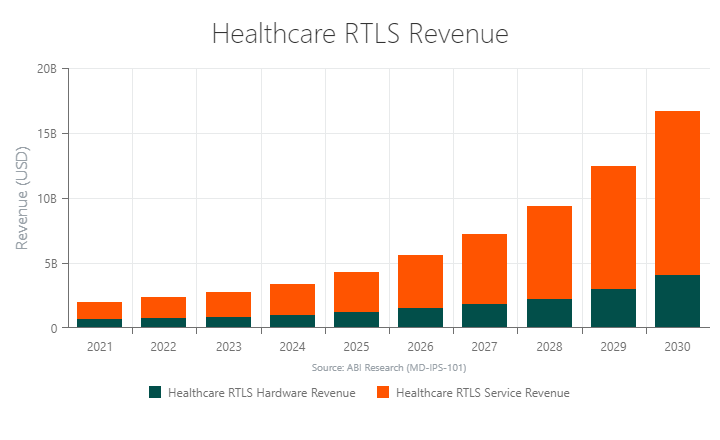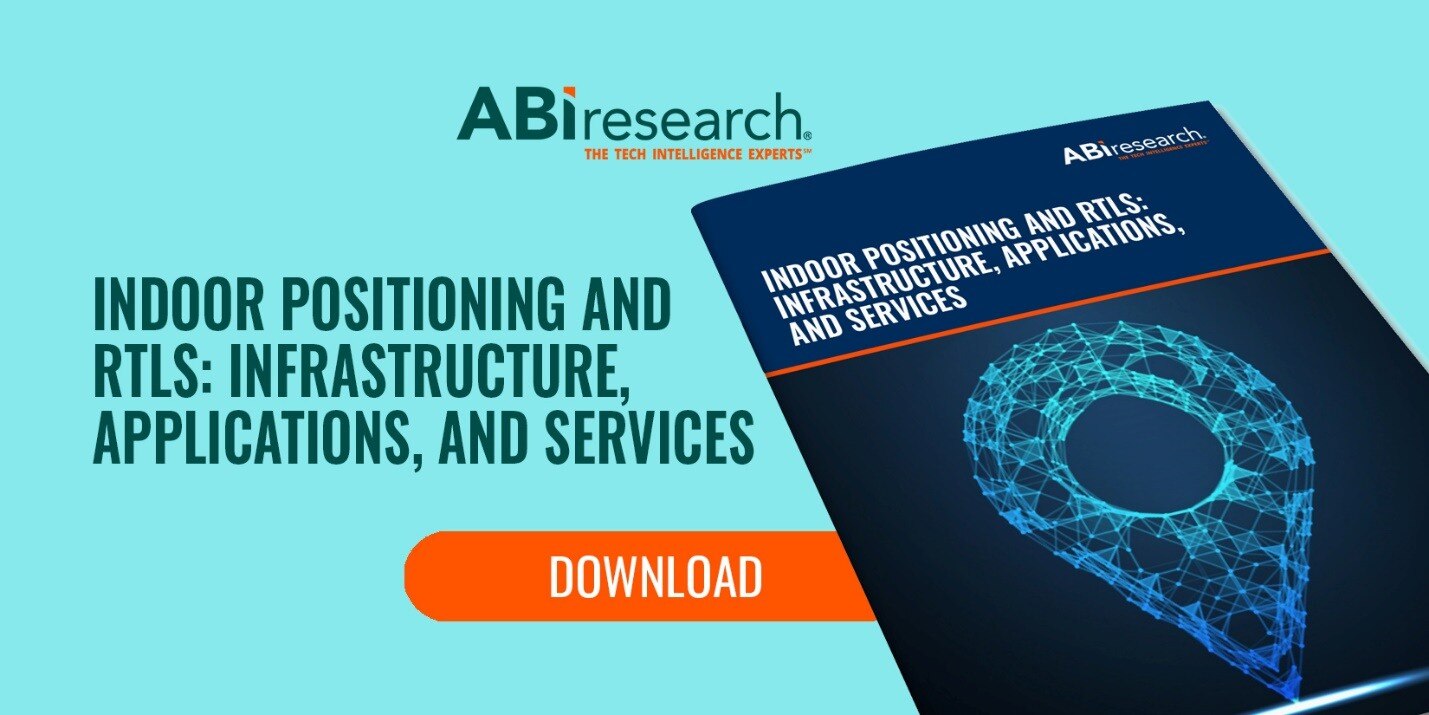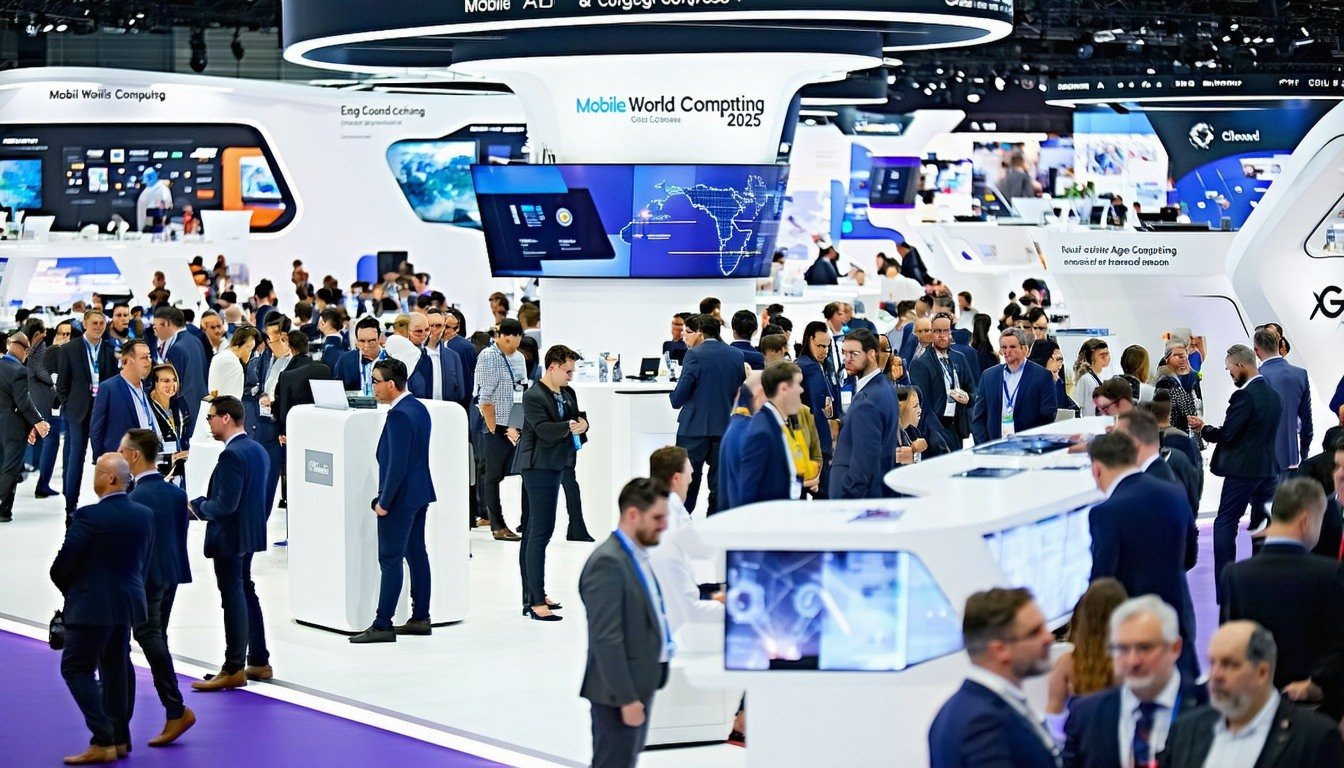Tantalizing opportunities await Real-Time Location System (RTLS) vendors targeting the healthcare industry. Larger and more scalable RTLS hardware and service solutions are needed in hospital settings, begetting a US$16.7 billion market opportunity by 2030. For hospitals, RTLS-enabled location visibility has proven use cases that boost staffing efficiency and delight patients. What are the market drivers for healthcare RTLS, and what technological considerations should RTLS vendors make as they reach out to hospitals?
Market Drivers for Healthcare RTLS
According to our latest market forecasts, healthcare RTLS implementations are expected to nearly triple between 2022 and 2030, increasing from 56,969 deployments to 165,168. Moreover, annual tag shipments (for asset tracking, etc.) for healthcare RTLS will grow from 31.63 million in 2022 to 242.25 million in 2030. Behind this robust growth are the attractive benefits of RTLS for healthcare organizations:
- Efficient Asset Tracking: Hospitals can potentially lose millions of dollars in expensive equipment in a relatively short time span if they don’t have proper asset tracking technologies/software. Hospitals also have limited bed availability and inventory for cardiac monitors, Intravenous (IV) pumps, and other pricey equipment for patient care. RTLS software and services can mitigate the loss of and manage these critical hospital assets by providing accurate location statuses in real time, with the help of Wi-Fi Access Points (APs) and the Internet of Things (IoT) devices. An RTLS not only reduces the frequency of equipment loss for hospitals, but also makes the equipment or pharmaceutical product retrieval process faster. These benefits translate to better profitability and lower inventory stock level needs.
- Automated Workflows: RTLS-based software automates nurse and doctor call systems and panic buttons, making hospital workflows more time efficient. About 3 in 10 hospitals state that improving staff efficiency is their top priority when using an RTLS.
- Automatic Patient Experience: Automatic patient experiences, such as check-in and navigation, can be facilitated with RTLS solutions. This reduces waiting times and waiting room-related Healthcare Associated Infections (HAIs). Moreover, an RTLS enables better monitoring of patients more likely to wander the hospital, such as the elderly and infants.

Matching RTLS Solutions with Healthcare Industry Pain Points
Hospitals prioritize addressing specific pain points, rather than seeking monolithic RTLS solutions. While the Return on Investment (ROI) for healthcare applications like IV pump tracking has been established, there is an increasing need for RTLS use cases, such as staff duress relief and hygiene compliance.
RTLS software vendors cater to this trend by offering custom point solutions that focus on key healthcare challenges, while maintaining a flexible, non-siloed infrastructure that can be expanded to multiple use cases. Their portfolio of software tools and integration, in addition to tailored hardware like rugged asset tags, portable anchors for signal coverage expansion, and wearable tags adapted for staff, wandering patients, and infants, allows for vertical-specific application solutions.
Hybrid Connectivity Keeps Costs Low for Healthcare RTLS Deployments
A migration to new connectivity technologies will drive scale for RTLS solutions in the healthcare sector. These technologies include the following:
- Radio Frequency Identification (RFID)
- Wi-Fi
- Infrared (IR)
- Bluetooth Low Energy (LE)
- Ultrasound
Bluetooth LE is becoming the dominant technology for low-cost and low-power applications in healthcare RTLS, causing older technologies like active RFID, IR, and proprietary signaling systems to lose popularity. This trend is particularly evident in industries with legacy systems like healthcare. In 2030, ABI Research expects 205 million Bluetooth LE RTLS tags to ship in the healthcare segment—the largest piece of the Bluetooth LE pie.
Healthcare stakeholders are also consolidating network infrastructure to reduce deployment costs, with the combination of Bluetooth LE RTLS over Wi-Fi infrastructure being the most common RTLS deployment solution. However, other wireless infrastructure options, such as private 5G, smart lighting, and electronic shelf labeling are increasingly seen as viable alternatives for hybrid RTLS deployments.
Learn more about how RTLS vendors can target the healthcare industry and other enterprise verticals in ABI Research’s Indoor Positioning and RTLS: Infrastructure, Applications, and Services presentation, which is part of the company's Location Technologies Research Service.






